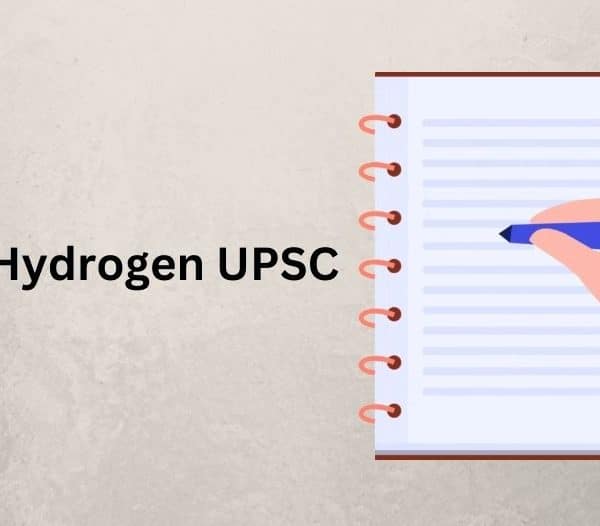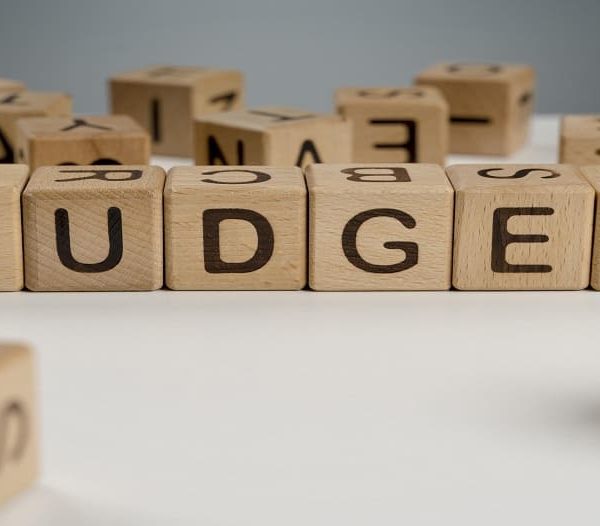The optional subject Physics in the IAS exam is a highly technical topic and a curriculum is appropriate for applicants who have graduated in physics. The IAS curriculum for this topic deals with statics and dynamics, general relativity, thermodynamics, electromagnetism, quantum mechanics and solid-state semiconductors and more.
Read the UPSC Physics optional syllabus in the sections below.
Detailed Physics Syllabus for UPSC Exam
Optional Subject consists of 2 papers. Each paper is 250 marks, making a total of 500 marks.
UPSC Physics Optional Syllabus for Paper I
Mechanics of Particles
Laws of motion; conservation of energy and momentum, applications to rotating frames, centripetal and Coriolis accelerations; Motion under a central force; Conservation of angular momentum, Kepler’s laws; Fields and potentials; Gravitational field and potential due to spherical bodies, Gauss and Poisson equations, gravitational self-energy; Two-body problem; Reduced mass; Rutherford scattering; Centre of mass and laboratory reference frames.
Mechanics of Rigid Bodies
System of particles; Centre of mass, angular momentum, equations of motion; Conservation theorems for energy, momentum and angular momentum; Elastic and inelastic collisions; Rigid body; Degrees of freedom, Euler’s theorem, angular velocity, angular momentum, moments of inertia, theorems of parallel and perpendicular axes, equation of motion for rotation; Molecular rotations (as rigid bodies); Di and triatomic molecules; Precessional motion; top, gyroscope.
Also Read: Best Android Apps for Government Exams
Mechanics of Continuous Media
Elasticity, Hooke’s law and elastic constants of isotropic solids and their inter-relation; Streamline (Laminar) flow, viscosity, Poiseuille’s equation, Bernoulli’s equation, Stokes’ law and applications.
Special Relativity
Michelson- Morley experiment and its implications; Lorentz transformations- length contraction, time dilation, the addition of relativistic velocities, aberration and Doppler effect, mass-energy relation, simple applications to a decay process; Four-dimensional momentum vector; Covariance of equations of physics.
Waves and Optics
Waves
Simple harmonic motion, damped oscillation, forced oscillation and resonance; Beats; Stationary waves in a string; Pulses and wave packets; Phase and group velocities; Reflection and Refraction from Huygens’ principle.
Geometrical Optics
Laws of reflection and refraction from Fermat’s principle; Matrix method in paraxial optics-thin lens formula, nodal planes, system of two thin lenses, chromatic and spherical aberrations.
Interference
Interference of light-Young’s experiment, Newton’s rings, interference by thin films, Michelson interferometer; Multiple beam interference and Fabry-Perot interferometer.
Diffraction
Fraunhofer diffraction-single slit, double slit, diffraction grating, resolving power; Diffraction by a circular aperture and the Airy pattern; Fresnel diffraction: half-period zones and zone plates, circular aperture.
Polarization and Modern Optics
Production and detection of linearly and circularly polarized light; Double refraction, quarter-wave plate; Optical activity; Principles of fibre optics, attenuation; Pulse dispersion in step-index and parabolic index fibres; Material dispersion, single-mode fibres; Lasers-Einstein A and B coefficients; Ruby and He-Ne lasers; Characteristics of laser light-spatial and temporal coherence; Focusing of laser beams; Three-level scheme for laser operation; Holography and simple applications.
Electricity and Magnetism
H5 Electrostatics and Magnetostatics
Laplace and Poisson equations in electrostatics and their applications; Energy of a system of charges, the multipole expansion of scalar potential; Method of images and its applications; Potential and field due to a dipole, force and torque on a dipole in an external field; Dielectrics, polarization; Solutions to boundary-value problems-
conducting and dielectric spheres in a uniform electric field; Magnetic shell, uniformly magnetized sphere; Ferromagnetic materials, hysteresis, energy loss.
Current Electricity
Kirchhoff’s laws and their applications; Biot-Savart law, Ampere’s law, Faraday’s law, Lenz’ law; Self-and mutual-inductances; Mean and r m s values in AC circuits; DC and AC circuits with R, L and C components; Series and parallel resonances; Quality factor; Principle of the transformer.
Electromagnetic Waves and Blackbody Radiation
Displacement current and Maxwell’s equations; Wave equations in vacuum, Poynting theorem; Vector and scalar potentials; Electromagnetic field tensor, the covariance of Maxwell’s equations; Wave equations in isotropic dielectrics, reflection and refraction at the boundary of two dielectrics; Fresnel’s relations; Total internal reflection; Normal and anomalous dispersion; Rayleigh scattering; Blackbody radiation and Planck’s radiation law, Stefan-Boltzmann law, Wien’s displacement law and Rayleigh-Jeans’ law.
Thermal and Statistical Physics
Thermodynamics
Laws of thermodynamics, reversible and irreversible processes, entropy; Isothermal, adiabatic, isobaric, isochoric processes and entropy changes; Otto and Diesel engines, Gibbs’ phase rule and chemical potential; van der Waals equation of state of a real gas, critical constants; Maxwell-Boltzman distribution of molecular velocities, transport phenomena, equipartition and virial theorems; Dulong-Petit, Einstein, and Debye theories of specific heat of solids; Maxwell relations and applications; Clausius- Clapeyron equation; Adiabatic demagnetisation, Joule-Kelvin effect and liquefaction of gases.
Statistical Physics
Macro and microstates, statistical distributions, Maxwell-Boltzmann, Bose-Einstein and Fermi-Dirac distributions, applications to the specific heat of gases and blackbody radiation; Concept of negative temperatures.
UPSC Physics Optional Syllabus for Paper II
Quantum Mechanics
Wave-particle duality; Schroedinger equation and expectation values; Uncertainty principle; Solutions of the one-dimensional Schroedinger equation for a free particle (Gaussian wave-packet), particle in a box, particle in a finite well, linear harmonic oscillator; Reflection and transmission by a step potential and by a rectangular barrier; Particle in a three-dimensional box, the density of states, free electron theory of metals; Angular momentum; Hydrogen atom; Spin half particles, properties of Pauli spin matrices.
Also Read: What is the Language for Paper A in UPSC? Tips to Crack the Paper A in UPSC Mains
Atomic and Molecular Physics
Stern-Gerlach experiment, electron spin, the fine structure of hydrogen atom; L-S coupling, J- J coupling; Spectroscopic notation of atomic states; Zeeman effect; Franck Condon principle and applications; Elementary theory of rotational, vibrational and electronic spectra of diatomic molecules; Raman effect and molecular structure; Laser Raman spectroscopy; Importance of neutral hydrogen atom, molecular hydrogen and molecular hydrogen ion in astronomy; Fluorescence and Phosphorescence; Elementary theory and applications of NMR and EPR; Elementary ideas about Lamb shift and its significance.
Nuclear and Particle Physics
Basic nuclear properties-size, binding energy, angular momentum, parity, magnetic moment; Semi-empirical mass formula and applications, mass parabolas; Ground state of deuteron, magnetic moment and non-central forces; Meson theory of nuclear forces; Salient features of nuclear forces; Shell model of the nucleus – successes and limitations; Violation of parity in beta decay; Gamma decay and internal conversion; Elementary ideas about Mossbauer spectroscopy; Q-value of nuclear reactions; Nuclear fission and fusion, energy production in stars; Nuclear reactors.
Classification of elementary particles and their interactions; Conservation laws; Quark structure of hadrons; Field quanta of electroweak and strong interactions; Elementary ideas about unification of forces; Physics of neutrinos.
Solid State Physics, Devices and Electronics
The crystalline and amorphous structure of matter; Different crystal systems, space groups; Methods of determination of crystal structure; X-ray diffraction, scanning and transmission electron microscopes; Band theory of solids – conductors, insulators and semiconductors; Thermal properties of solids, specific heat, Debye theory; Magnetism: dia, para and ferromagnetism; Elements of superconductivity, Meissner effect, Josephson junctions and applications; Elementary ideas about high-temperature superconductivity.
Intrinsic and extrinsic semiconductors; p-n-p and n-p-n transistors; Amplifiers and oscillators; Op-amps; FET, JFET, and MOSFET; Digital electronics-Boolean identities, De Morgan’s laws, logic gates and truth tables; Simple logic circuits; Thermistors, solar cells; Fundamentals of microprocessors and digital computers.
How to Prepare for Physics Optional UPSC 2021
Physics is a science division concerned with the origin and characteristics of energy and matter. Physics involves motion, heat, light and other energy, sound, momentum, magnetism, and the configuration of atoms. With the right method, this exam can be cleared on the first try, but don’t get discouraged if you miss it.
- Know the syllabus of the IAS exam
- Pick good reference books
- Make a proper study plan
- Make notes for each topic
- Practice previous years’ question papers
Also Read: What is Paper A and Paper B in UPSC? Important Things to know about the Civil Services Examination
Why is Physics an Optional Subject?
Physics has become very common as an optional topic these days. Just four to five regular books are enough to plan optional sample papers for UPSC Physics. If you’re even somewhat interested in physics, consider going through certain books at the undergraduate level. If you can build logic, see that your understanding goes in either direction, and it doesn’t bore you, it’s for you. If you begin to understand Physics, you get a likelihood that you can make use of it at any stage.
Who Should Pick Physics?
Applicants with science in specific Physics major in their degree. Applicants with engineering cores at the college. While not as commonplace as history or sociology or public policy, those with an engineering or science background in college will take it. As a science subject, there is no space for interpretations. If you know the question and can compose it in a satisfactory manner, you will get the scores. There’s nothing arbitrary here.
Physics Optional UPSC Tips
It is very crucial to have a detailed understanding of the UPSC Physics Syllabus topics. Higher-level problem-solving abilities should be built to score better. The derivations are one of the essential parts of your answers. Analyze the number of marks assigned to the question and determine whether to derive the entire equation or only give the formula. You need to know the meanings of concepts and the different equations relevant to the concept. If you have a question about a specific phenomenon, you must clear both the underlying explanation and the mathematical explanation.
Conclusion
The physics optional syllabus for the UPSC is massive, but aspiring people can concentrate on a few subjects at a time. Splitting the lesson plan into sections and first covering core concepts will help to solve the UPSC Physics optional question paper with ease. Planning for this subject allows aspirants to spend at least two hours a day for 8 to 10 months. This will make it possible for applicants to fully cover the entire syllabus.
Also Read: Best Books for Ethics UPSC: Which Book is Good for Ethics Integrity and Aptitude?







The explaination is in detail and in simple language to understand.
Thank you for providing the blog, it was very helpful for physics. What do you guys think about it and what is your optional subject?